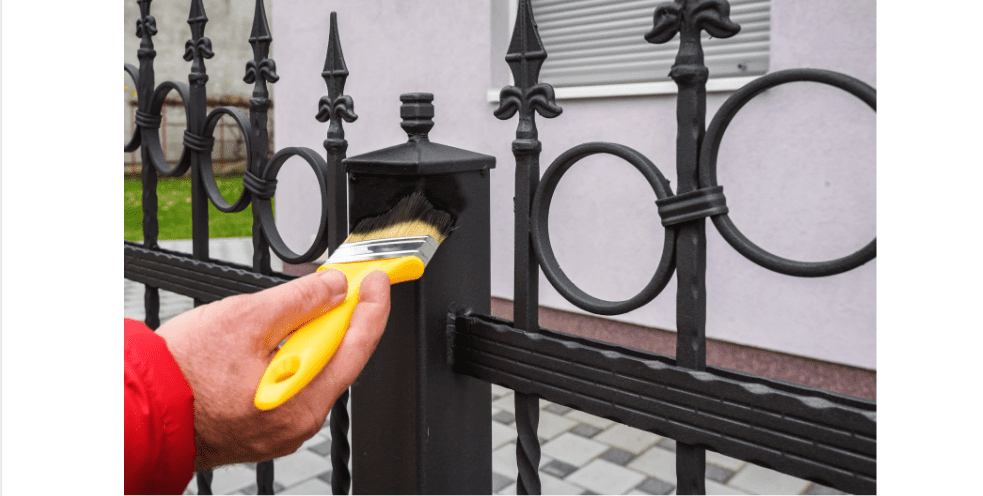To maintain the quality and durability of metal paints proper surface preparation is crucial. In the long run, following a few basic guidelines before painting any surface with products such as Berger glass coating or Shalimar Paint’s wood enamels will make a significant difference. Metal surfaces are a part of various structures in a home or office. Outdoor metal fittings, copper piping, steel doors, and window frames are just a few examples of such structures. All metal surfaces need repainting every once in a while to keep them looking as good as new.
But even the best metal paints won’t last long without suitable surface preparations, laying waste to all your effort and expense. So, here’s a look at what you should know before painting metal surfaces to ensure a successful painting project with long-lasting results.
Clean the Metal Surface
Before applying products like Berger glass coating, make sure the surface is clean. Even when the metal surface seems clean, any residual oil, dust, or rust will prevent the paint from properly adhering to the surface. Cleaning metal surfaces with pressure washing is usually the quickest and most convenient method. Pay careful attention to spots with fungus or mildew or sections where pollutants gather excessively. If the surfaces are in good shape, wiping them with a clean, dry cloth and then washing them with a mild detergent solution should be enough to ensure proper paint adhesion.
Remove Old Paint
Remove any flaky paint before applying a fresh coat. Scraping away any debris and rust, as well as any peeling paint, is a smart move. To ensure that the metal surface is smooth and uniform, sand away any debris or residues that escaped the cleaning process.
Painting a metal surface may appear simple, but removing old paint is challenging. Since paint tends to mix well with all metals, cleaning it can be difficult. When deciding how to remove paint off a metal surface, consider the type of paint used. Use acidic or chemical solutions only to clean tough paints like acrylic or latex.
Remove Rust and Oils
When prepping metal for painting, it is critical to inspect for rust to ensure that the paint adheres well to the surface. Painting a corroded surface can cause the metal to rust further, while the paint job will appear uneven and patchy. Start cleaning up loose rust with a brush, smoothen the area with sandpaper, then apply rust-inhibitive priming. Use rust-inhibiting primers to fix damaged areas and restore them to paintable condition. If there is corrosion on the surface, soak the item in a suitable rust remover and make sure to follow the manufacturer’s instructions. To remove any remaining rust, wipe the surface thoroughly with a damp cloth.
Even if the metal is free of corrosion, you will need to remove any oil compounds that might be present. As almost any type of oil or grease will significantly decrease the ability of paint to bind to the metal, you can use acetone, a chemical solvent well-known for its ability to remove greasy materials.
Make Repairs to the Surface
While cleaning the metal surfaces, you may notice tiny holes and dents that make the surface uneven. To fix holes and dents, scrape the area with sandpaper until it is plain metal and then clean with a suitable product. For example, an epoxy-based compound can repair most dents, but larger gaps will require a tougher epoxy filling. After the application, sand the boundaries of the repaired areas to make sure the surface is perfectly smooth.
Apply the Primer
The last step before painting metals is to choose and apply a suitable primer. Applying a primer as soon as the surface is ready can help avoid corrosion and dust build-up. When selecting the primer, consider the type of metal, its intended appearance, and the surrounding conditions. Never use water-based primers on metal surfaces because moisture can seep through and end up causing the paint to deteriorate in a short time. Red Oxide and Zinc Yellow primers are popular metal surface primers from Berger Paints. Zinc Yellow is among the best primers for very humid weather and heavily corrosive conditions. It is a great choice for mild steel and non-ferrous surfaces. The Red Oxide primer is an oil-modified, alkyd-based primer that is free from heavy metals like lead, mercury, and chromium. This is perfect for ferrous metal surfaces.
The precautions and steps to be followed are the same whether you’re painting a metal fence or a metal door. An intelligent way to ensure the best results is to contact a trusted paint company for consultation.
